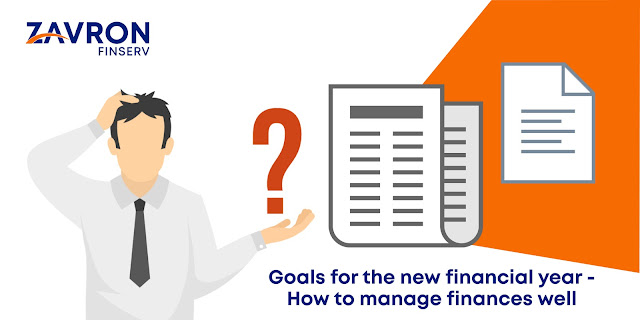How Fintech App Impacted Offline Lending Process
On 25th March, 2021, RBI Governor Shaktikanta Das crowned India as the most flourishing fintech hub of Asia. With an estimated adoption rate of 87% as compared to the global average of 64%, India is well on its way to become the leader in global fintech development, and a significant credit of this change can be traced back to the launch of several fintech applications.
While at first glance it might appear that the advent of so many fintech applications has only redefined the online lending process, however in reality over the past couple of years, both offline and online lending value chains have been completely overturned and both of them are now experiencing a better reality.
What Is the Lending Value Chain?
One of the first and most important aspects we need to understand is the meaning of a lending value chain. In simple terms, a lending value chain encompasses the entirety of the lending process right from start to finish. Essentially, from the moment the customer first contacts the lending institution all the way to the moment the loan amount is disbursed and subsequent repayments are collected, the lending value chain is in process.
Now, as you might realize, there are essentially two variants of this process; online and offline, and how they function in reality differ across several aspects.
Difference Between Offline and Online Lending Value Chains
Now that you are aware of lending value chains, let us understand about the differences between the offline and online variants.
As the name suggests, in an online lending value chain, almost every process will be online and automated. While they might either be independent of each other or function in collaboration, most of it will be based and function from the cloud, such that they have cross device functionality and can be accessed irrespective of geographies.
On the other hand, in an offline lending value chain, a majority of the process involves human intervention and very little of the work is done on a computer system. Right from accepting the loan application from the borrower, all the way to credit checking and manually disbursing the loan to the borrower, every process is human dependent and offline, meaning that they are often time consuming and exhaustive.
For decades traditional banking institutions have relied on offline lending value chains to serve their customers with instant personal loan products. While it is true that the ultimate goal of disbursing the loan to the customer was eventually achieved, the road to the same was often filled with challenges. Right from long application processing times to poor credit checks, customers often suffered the brunt of offline lending value chains, however fintech applications are now finally resolving these issues.
The Advent of Fintech Applications
As I shared right at the beginning of the article, the introduction of fintech applications completely redefined the offline lending process in India. The simple reason behind this being, offline lending processes had a lot of imminent challenges, which were easily solved via an effortless switch to online lending processes, for instance.
1. Reduced Waiting Times
Even 2 years back, if you wanted to avail the features of a personal loan from a bank, you would have to wait in long queues to first collect the application form, followed by completing it and submitting it with authorized personnel. Not only was this process time consuming, but also exhaustive as you would need to visit the bank branch numerous times to complete the application process.
In contrast, today the same banking institutions have smartphone applications of their own, via which you can apply for a personal loan of your choice at an instant. Along with this, since these applications are always available on your phone, there is no need for you to physically visit a bank branch, collect the application form and submit it. Everything can be done right from your mobile screen.
2. 100% Paperless Process
In lieu of the previous point, earlier you were required to submit physical copies of all your supporting documents. While at first glance, this might not appear to be of concern, in reality this presents a challenge to both the lender as well as borrower.
Firstly, as a borrower it becomes challenging to collect all supporting documentation in physical format, followed by submitting photocopies of the same to the bank. Secondly, as the lender is collecting physical documentation from you, it often becomes a challenge to properly store these documents. This is the reason why sometimes lenders tend to misplace loan documents which contributes to further delay in the process.
However, with the advent of fintech apps, lenders can now seamlessly collect all relevant documentation instantaneously via your mobile device. Not only does electronic documentation arrive with the advantage of easy storage, but also they can be easily tracked and accessed for future reference.
3. Instant Credit Assessment
Last but not least, one of the most pertinent challenges with offline lending processes is inaccurate credit assessments.
Since in offline processes, lenders often do not have access to up to date credit history of borrowers they tend to either underestimate or overestimate the creditworthiness of the borrower, which further contributes to inaccurate loan sanctions.
Additionally, in offline processes lenders primarily depend on one or two verticals to assess the creditworthiness of borrowers, meaning, more often than not, eligible borrowers are not sanctioned the loan amount.
On the other hand, since the advent of fintech applications not only do lenders have the ability to instantly assess your creditworthiness but also do so accurately.
Over and above accessing your latest credit history, lenders take into account a variety of other factors, such that an accurate assessment can be reached at. This is the reason, as to why so many new age lenders are able to disburse loans even to borrowers with low or moderate credit scores.
This feature thus not only helps lenders serve a wider array of borrowers but also borrowers in availing a wide variety of lending instruments.
In Conclusion
With the advent of fintech apps in India, both online and offline
lending processes have been turned on their heads and for the better. What do
you think the future of lending will look like in India? Comment below and let
us know.


Comments
Post a Comment